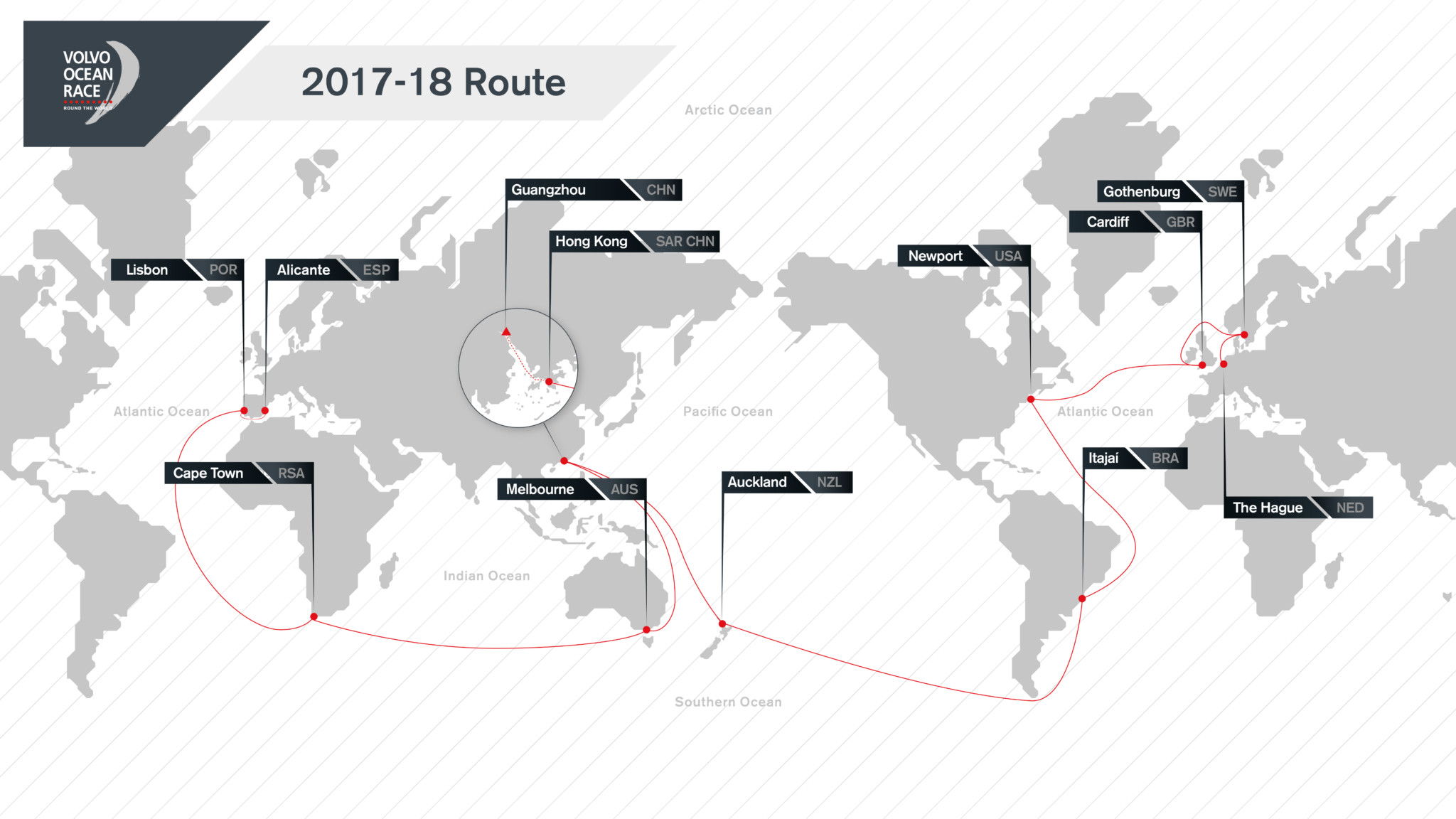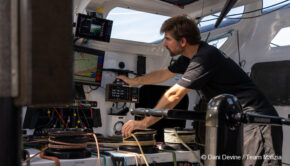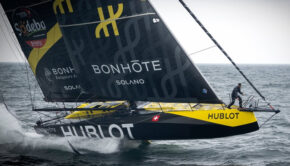Adapting IMOCA for full-crewed clash
Published on October 2nd, 2018
For 2017-18 Volvo Ocean Race winner Jérémie Beyou, his roots are in shorthanded sailing, having finished third in the 2016 Vendée Globe. He knows the IMOCA class well, and with it being chosen for the 2021-22 Race, he offers this insight how it can be adapted to full-crewed competition.
Compare the 60-foot IMOCA to the Volvo Ocean 65.
They are quite different … it’s a different way of sailing. You sail the IMOCA more like you’re on a multihull compared to a mono. You have to be able to manage it – you don’t have to push hard all the time, you have to take care of the boat and watch the data and loads on the boat.
Those of us who sail in the IMOCA class regularly understand this, so maybe we can do the next Race as a crew. After developing these boats, we know the rules very well, so I can imagine collaboration between teams who are already sailing in this class ahead of the next Race.
How would a fully-crewed setup work on the IMOCA?
Sailing with five people on these boats is really nice. We do it sometimes, during deliveries and small races. It’s a good size and because it’s so difficult to sail the boat alone, having five people onboard means you can push the boat to its limits and focus 100% on performance all the time, which you can’t really do on your own.
But it also means when you’re sailing five rather than nine or 10 in a usual Volvo Ocean Race boat, all the sailors onboard must be multi-skilled. It’s key that the same person can be a trimmer, a driver, a bowman, and be able to do the strategy, so it’s like sailing with five solo sailors onboard rather than a traditional crew.
How much conversion would need to be done on the IMOCA?
It’s mainly a question of living onboard. The inside of the boat would need to be adapted for five people. That’s the bunks and kitchen, for a start. And of course the cockpit too. We really designed Charal for solo sailing, so the cockpit would need to be very different. After that, the big difference will be on the hull design and the foil design, depending on the course of the race.
If it’s the same stopovers as in 2017-18, then you have a lot of time upwind, a lot of light wind spots. Charal is a boat designed for the 2020 Vendée Globe, which is broad reaching and downwind in strong winds only, so it’s not currently an ideal design for the next Race.
I think that seven boats in the next Race isn’t enough, we need between 10 and 15 boats to have the perfect number – so if every team can’t build a new boat, it’d be interesting to have some boats coming over from the Vendée.
Called the Volvo Ocean Race for the past six editions, it is not yet known what the name of the 2021-22 Race will be. Volvo Cars will remain a sponsor of the 2021-22 edition but it is likely that will not include naming rights.
Seven teams raced the one design Volvo Ocean 65 in the 2017-18 Volvo Ocean Race, beginning in Alicante, Spain on October 22 2017 with the final finish in The Hague, Netherlands on June 30 2018. In total, the 11-leg race visited 12 cities in six continents: Alicante, Lisbon, Cape Town, Melbourne, Hong Kong, Guangzhou, Auckland, Itajaí, Newport, Cardiff, Gothenburg, and The Hague. Dongfeng Race Team (CHN) led by skipper Charles Caudrelier (FRA) won the offshore contest while MAPFRE (ESP) and skipper Xabi Fernández (ESP) won the In-Port Series.
Race details – Tracker – Scoreboard – Race route – Facebook – YouTube
Source: Volvo Ocean Race











 We’ll keep your information safe.
We’ll keep your information safe.